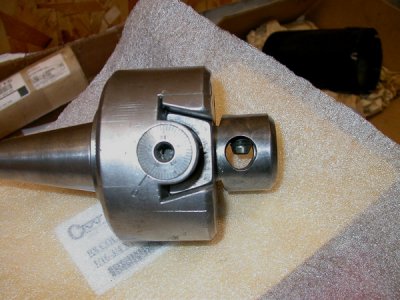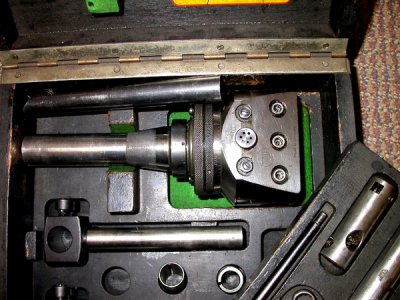- Joined
- Apr 6, 2011
- Messages
- 2,082
I'm trying to get tooled up for using my Wells-Index 860 mill and I've already gotten a couple of boring heads. Now I need to purchase some boring bars for them.
Both heads can take 3/4" shank bars so that narrows it down a bit. Where I run in to trouble is the choice between HSS/Cobalt and carbide cutting tips. I've also seen the indexable insert types but I'm not real comfortable going that route as of yet.
The top speed of the W-I is about 4000rpm. I plan on milling a wide variety of metals. I've already done some small aluminum parts, the next project is in brass and after that I have some 4140 steel to mangle.
I know that there is seldom a "perfect" answer that will take care of all it's needs but to start I'm trying to determine which would cover the most ground or be most useful at this point. I'd also like to hear which brands you prefer to work with as the quality, I'm sure, varies as much as the prices.
Thanks guys,
-Ron
Both heads can take 3/4" shank bars so that narrows it down a bit. Where I run in to trouble is the choice between HSS/Cobalt and carbide cutting tips. I've also seen the indexable insert types but I'm not real comfortable going that route as of yet.
The top speed of the W-I is about 4000rpm. I plan on milling a wide variety of metals. I've already done some small aluminum parts, the next project is in brass and after that I have some 4140 steel to mangle.
I know that there is seldom a "perfect" answer that will take care of all it's needs but to start I'm trying to determine which would cover the most ground or be most useful at this point. I'd also like to hear which brands you prefer to work with as the quality, I'm sure, varies as much as the prices.
Thanks guys,
-Ron



